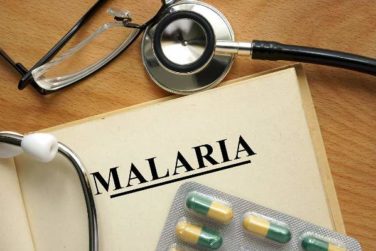AT THE GASTROINTESTINAL CANCERS SYMPOSIUM
SAN FRANCISCO (FRONTLINE MEDICAL NEWS) – Radiation therapy for rectal cancer may actually reduce the risk of some other cancers that occur in the pelvis, according to a population-based cohort study conducted in the Netherlands.
The analysis of more than 29,000 patients treated for rectal cancer as their first primary tumor found that overall, they had a somewhat higher incidence of second pelvic tumors than did the general population, investigators reported at the Gastrointestinal Cancers Symposium.
But this did not appear to be caused by radiation effects, as the adjusted risk of these tumors was in fact 22% lower for the patients who received radiation than for those who did not.
“We did not find an increase in second tumors after previous radiotherapy for rectal cancer,” commented first author Anouk J.M. Rombouts , a medical student and doctoral candidate at Radboud University Medical Center in Nijmegen, the Netherlands. “Radiotherapy seemed to have a protective effect on the development of second cancers, predominantly for prostate cancer.”
The elevated incidence relative to the general population might instead be due to factors such as genetics and lifestyle behaviors that globally influence an individual’s cancer risk, she proposed at the symposium, sponsored by the American Society of Clinical Oncology, ASTRO, and the Society of Urologic Oncology.
Invited discussant Dr. Claus Rödel of the University of Frankfurt, Germany, noted that previous analyses of radiation therapy and risk of second cancers have had mixed findings. But mechanistically, several aspects of radiation therapy for rectal cancer could plausibly lower prostate cancer risk.
“A typical 3-D radiation treatment volume will at least cover the posterior part of the prostate, that will thus receive a dose of up to 50 Gy, which may indeed be able to sterilize prostate cancer cells, and thus prevent or at least postpone the clinical manifestation of prostate cancer,” he elaborated. “Also, it is known that pelvic radiotherapy will reduce hormone levels both in men and in women, and this also may account for the reduced risk of prostate cancer in men, and of breast cancer in women” as seen in another study.
“I think the data from the Netherlands group should not be interpreted in a way that they disavow the potential of radiotherapy to induce second cancers, but they suggest rather that there is a balance between radiation induction and radiation inhibition of second cancers,” Dr. Rödel concluded.
For the study, the investigators used national registry data to identify 29,214 patients in the Netherlands who were treated for nonmetastatic rectal cancer as their first primary cancer between 1989 and 2007. Overall, 53% received radiation therapy. The median duration of follow-up was 6.2 years.
Compared with the Dutch general population, the patients as a whole had a higher incidence of new pelvic tumors (standardized incidence ratio, 1.14), translating to an absolute excess risk of about 23 cases per 10,000 people per year, Ms. Rombouts reported.
The incidence of these tumors was 2.2% among the patients given radiation and 3.4% among those not given radiation (hazard ratio, 0.70).
Within the irradiated group, risk was higher for patients who received their radiation postoperatively compared with those who received it preoperatively (HR, 1.37).
“We think this might be due to the fact that patients who are treated preoperatively almost always finish their treatment, whereas patients who receive postoperative treatment due to various reasons do not complete treatment sometimes, because of bowel leakage or other reasons [that make them] unfit for adjuvant treatment,” she said. “We unfortunately did not have data on whether patients completed their treatment or not, so it might be a dose-related issue.”
By type of second tumor, patients who received radiation had lower risks specifically of prostate cancer (HR, 0.51) and rectosigmoid cancer (HR, 0.59). No significant differences were found for bladder, gynecologic, hematologic, or anal cancer, or for bony pelvic and pelvic lymph node malignancies.
Finally, in multivariate analysis, patients who received radiation therapy for their rectal cancer still had a reduced risk of second pelvic tumors relative to peers who did not receive this therapy (HR, 0.78). The difference was driven by a reduction in risk among men (HR, 0.59), consistent with the findings for prostate cancer; there was no significant increase or decrease in risk with radiation among women.



